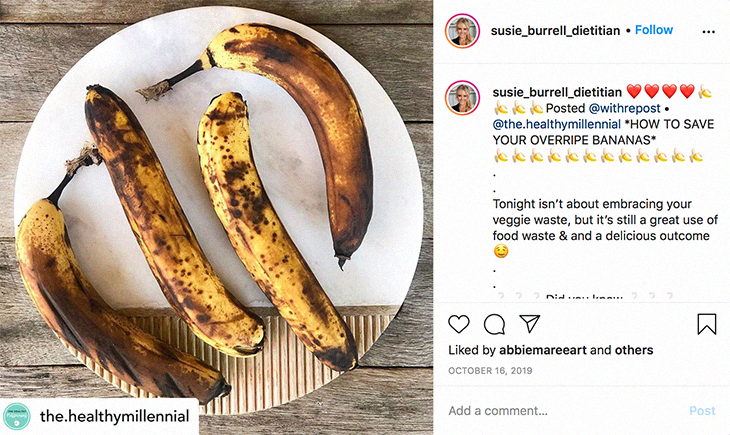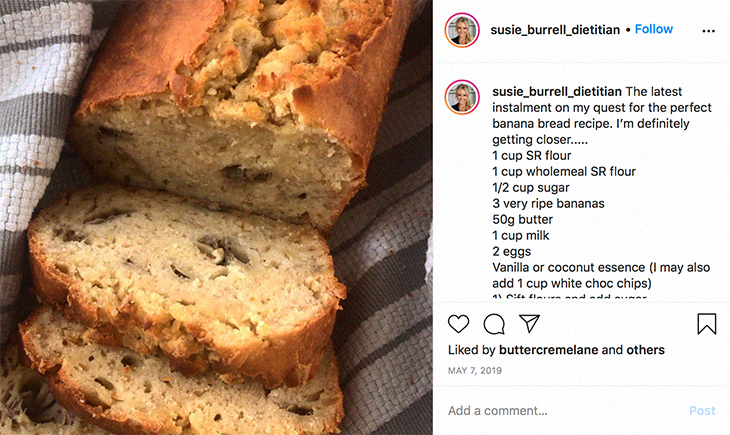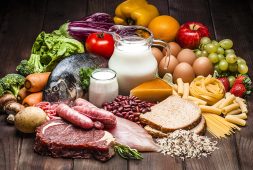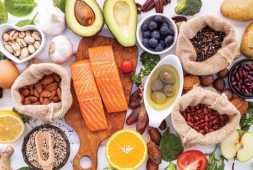
Even if you’re a banana lover, you probably throw out the skins like everyone else right? But before you throw out those banana peels, take a look at this first.
Australian dietician and nutritionist, Susan Burrell, explains that banana peels aren’t getting the recognition that they deserve. While most people associate bananas with potassium, they are also filled with a ton of over health benefits. And she shares that the peel itself, is one of the highest sources of not only potassium, but magnesium, Vitamin C and Vitamin B6 as well, amongst others.
As shared on her website, susieburrell.com/au, “At a time in which minimizing food waste is the top of mind for many, it seems that there is no better time to talk about the skins of bananas and all the things you can do with them.”

She goes on to say, “Specifically, bananas with bright yellow skins have a higher proportion of antioxidants associated with anti-cancer effects while green skins (less ripe bananas) are particularly rich in the amino acid tryptophan which is associated with good sleep quality. Green banana skins are also rich in resistance starch, the special type of fibre known to benefit gut health.”
She even goes on to say that eating the skin of a banana can actually increase a person’s fiber intake up to a whopping 10 percent, which can aid in regularity of bowel movements, leading to potential weight loss.
“You will get almost 20 percent more Vitamin B6 and almost 20 percent more Vitamin C,” she adds.
You’re probably wondering though, how exactly can you eat them? You shouldn’t eat them as is, right? Susie explains that they shouldn’t be eaten plain. Instead, she suggests cooking the skin in such meals like baked goods, stews and even curries in order to ‘break down the cell walls’ so that the nutrients will be easier for people to absorb.
She also iterates, “Blending the skin into recipes or smoothies is the most practical way to use them. Here you will increase the volume and nutritional content of recipes with minimal change to taste and texture of the cooking. For example, if you make your smoothie with a whole banana chop the ends of the skin, chop into small pieces and simply blend with the rest of the smoothie.”
She also posted a recipe of what she considers is a good recipe to make banana bread. See the full post here.

Considering all the myths that are floating around about bananas, their true health benefits, how fattening they are, that they supposedly cause constipation, and are full of sugar. But again, Burrell debunks the idea that bananas are packed with sugar.
She explains, “When the claim has been made that bananas are a significant source of carbohydrate or sugar (20-30g depending on the size of the banana), it is assuming that all types of carbohydrate are equal. It is assuming that a teaspoon of sugar is the same as the equivalent amount of carbohydrate in a banana, as is in a potato as is in a biscuit, which is simply not the case.”
She adds, “Bananas like all fruits are composed largely of carbohydrates, and the natural sugar fructose.” But she also explains that while “It is true that bananas are a concentrated source of carbohydrate, but this is why they are also known as nature’s energy food. And they are a much better, natural source of fuel than the processed carbs such as white rice, white bread, processed snack foods and sugary drinks many of us still eat far too much off. This is the main issue with our diets, not the humble banana.”
So the next time you decide to indulge in a banana, before your mind starts to spiral into all the possibilities of whether they are actually beneficial to your body, remember to check out the facts.



